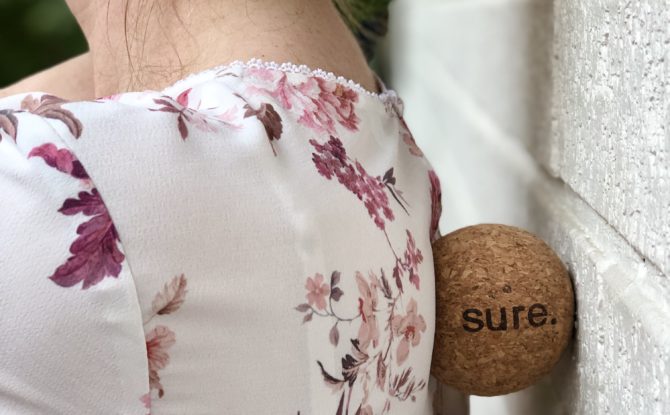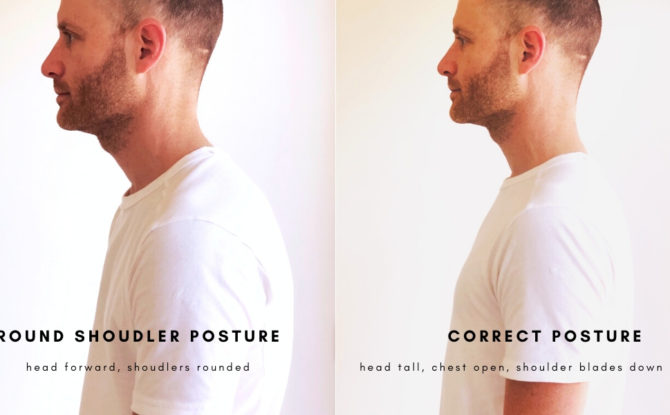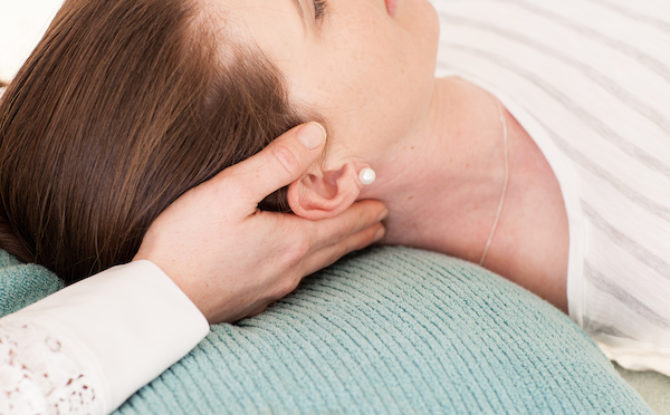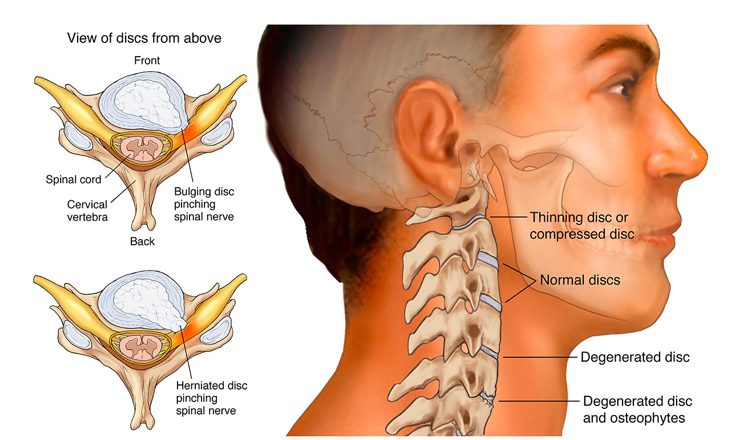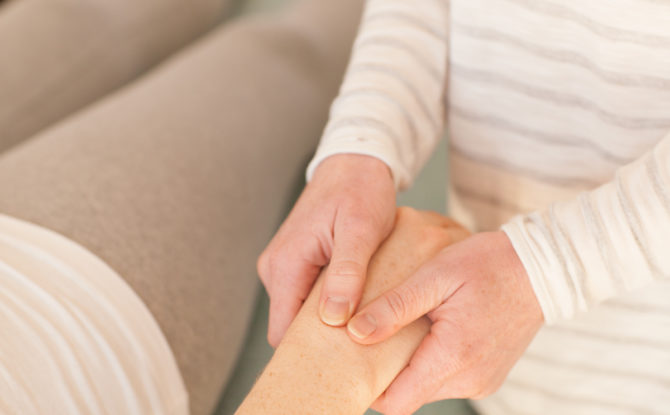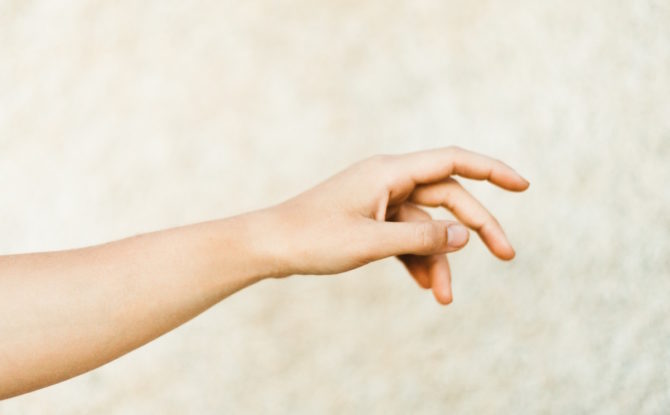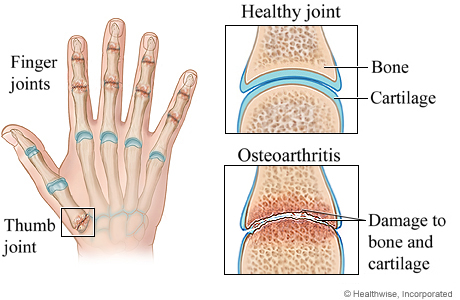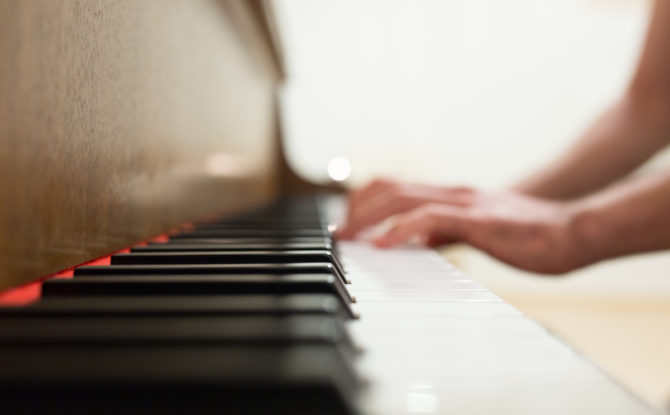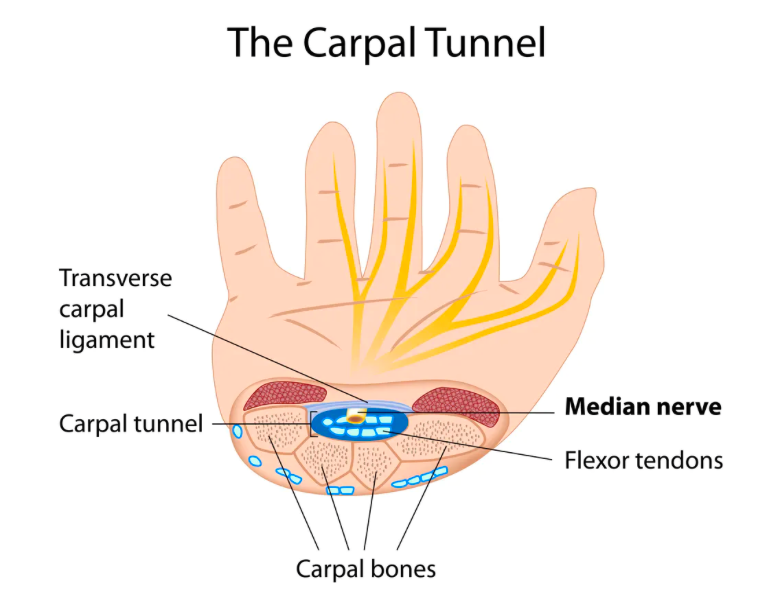Our wrists, hands and fingers are capable of many fine, controlled and complex movements, whether it is playing a musical instrument, a sporting activity, your occupation or just one of the tasks of day to day life.
Many of the muscles which control these movements come from our forearm and these muscles are attached to the bones of our hand and fingers via tendons. Where these tendons pass over the wrist, they travel inside little lubricated sheaths. Some of the more common tendinopathies are caused by irritation at this point, often due to overuse or repetitive use causing friction.
Tendinopathy can occur when these tendons become overused or overloaded, often due to an unaccustomed activity or an increase in the amount of an activity you already do. Maybe you’ve started a new desk job with a lot of computer work, have had a baby and now spend a lot more time lifting and carrying them or are playing a lot more tennis. So the affected tendon is placed under greater load or is being used more repetitively than it is used to and this can lead to pain.
Here we will discuss some of the more common types of tendinopathy that occur at the wrist and hand:
Wrist tendinopathies
Tendons may be affected at the front or back or either side of the wrist, depending on which action or activity is aggravating them. For example, golfers and tennis players are more likely to experience pain at the back of the wrist whereas rock climbers are more likely to experience pain at the front of the wrist.
Signs and symptoms:
- pain and tenderness in the region of the wrist
- increased pain during particular movements of the wrist (eg. bending forward or backward)
- feeling of weakness in the wrist when trying to lift an object or weight-bear (eg. when doing a push-up)
- difficulty doing everyday things like turning a door knob or lifting the kettle
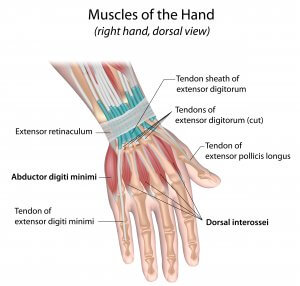
de Quervain’s Tenosynovitis
This involves the tendons on the thumb side of the wrist. It is more common in women than men and is commonly seen in workers (eg. cashiers) and new mothers (due to repetitively lifting a baby).
Signs and symptoms:
- pain and tenderness over the thumb side of the wrist
- increased pain when clenching the thumb in a fist and deviating the wrist sideways, away from your thumb
- may cause swelling
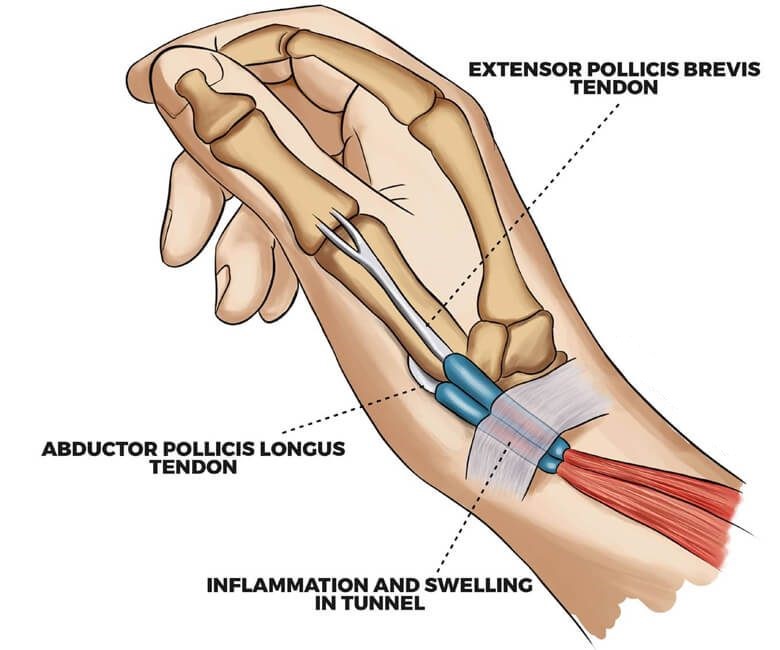
Trigger finger (Stenosing tenosynovitis)
This condition occurs when one of the little lubricating sheaths in the fingers or thumb becomes thickened and the tendon gets “stuck” when it tries to glide through. The finger may get stuck in a bent position and be difficult to straighten. It is more common in women than men, if you have diabetes, rheumatoid arthritis or do heavy gripping activities.
Signs and symptoms:
- pain when bending or straightening the finger or thumb
- there may be a painful pop or click or a locking sensation when straightening the finger
- there may be swelling over the area
- you may feel a lump on the inside of your finger
Osteopathy and tendinopathy of the wrist and hand
– Our osteopaths will perform a complete assessment and determine a diagnosis of your pain.
- Our osteopaths will differentiate which type of tendinopathy you may have and tailor a treatment and management plan accordingly.
- Osteopathic techniques including soft tissue massage, stretching, joint articulation and gentle joint mobilisation may be used to help reduce joint restrictions and muscle tension in the forearm and hand.
- We may chat about some small modifications you can make to your daily routine to avoid aggravating the symptoms.
- We will advise you on appropriate exercises to slowly and correctly re-load the tendon to ensure optimum recovery.

